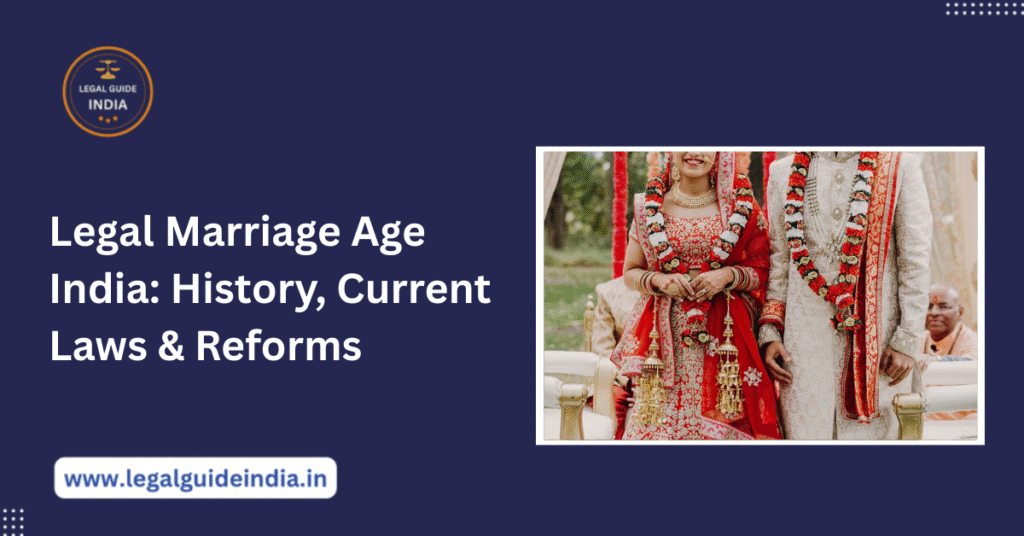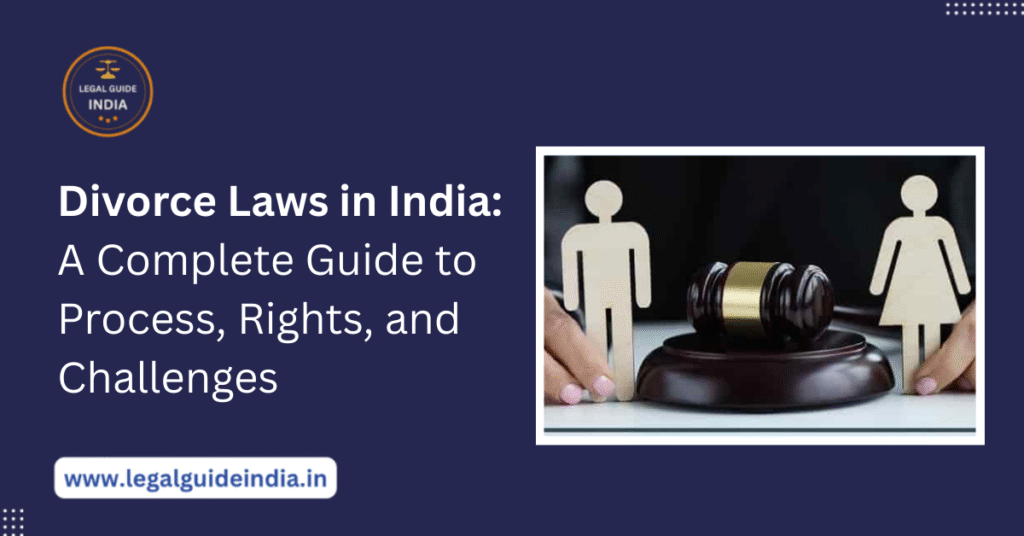Introduction: Why Marriage Age Matters
The legal marriage age in India is one of the most important social and legal issues affecting gender equality, health, education, and child rights. When people marry too young, it can lead to early school dropouts, health risks for young mothers, and loss of autonomy—especially for girls. Understanding how this age has evolved, what laws currently govern it, and what reform efforts are underway is essential for legal clarity and social justice.
History & Background: How the Age Rules Developed
- Under British rule, the Child Marriage Restraint Act, 1929 (or Sarda Act) made child marriage illegal for girls under 14 and boys under 18.
- After independence, in 1949, the minimum age for girls was raised to 15. In 1978, it was again increased: women to 18 and men to 21.
- In 2006, the Prohibition of Child Marriage Act, 2006 (PCMA) replaced earlier laws, reaffirming 18 for women, 21 for men, and adding enforcement mechanisms.
Earlier Legal Marriage Age India vs Current Laws
Earlier Legal Age
- At different times, the legal age was lower: e.g., 14 for girls under the 1929 Act, then 15 in 1949.
- Some personal laws had no fixed age or followed puberty-based traditions.
Current Laws About Legal Marriage Age
- Under PCMA 2006, women (or girls) must be at least 18 years old; men (or boys) must be at least 21 years.
- Special Marriage Act 1954 and Hindu Marriage Act 1955 align with these age requirements.
- Some states are contemplating amendments. For example, Himachal Pradesh has passed a bill to raise the minimum age for women from 18 to 21.
Importance of Having a Legal Marriage Age
- Protects minors from early marriage, which often leads to serious health complications (maternal mortality, infant mortality).
- Allows better educational and economic opportunities for young people, especially girls.
- Reduces child abuse, exploitation, and ensures consent.
- Legal clarity and standardisation (across states and communities) help in reducing misuse or unregistered under-age marriages.
What Drove Early Age Marriages in India?

- Social norms, norms of caste/community, religious traditions, early expectations of marriage.
- Poverty: families marrying off daughters early to reduce financial burden.
- Lack of awareness about laws; weak enforcement in many rural areas.
- Lower education rates for girls pushed them toward marriage earlier.
Legal Age Across The Globe: Comparison
| Country | Minimum Legal Age (women) | Minimum Legal Age (men) |
|---|---|---|
| India | 18 | 21 |
| United States | ~18 (varies by state) | ~18 |
| United Kingdom | 18 | 18 |
| China | ~20-22 in some provinces | ~20-22 |
Note: Many countries are moving toward making legal ages equal for men & women.
Proposed Amendments & Ongoing Debates
- The Prohibition of Child Marriage (Amendment) Bill, 2021 seeks to raise the minimum marriage age of females to 21 years, bringing both genders to 21.
- Himachal Pradesh law (2024) has already amended its state law to make minimum age of marriage for women 21.
- Critics argue raising the age without addressing socio-economic conditions can have unintended outcomes: criminalising consensual adult relationships between 18-21 who consider themselves adults. Also concerns about autonomy and rights under Article 21 of Constitution.
Criticism & Challenges
- With age set at 21 for women, marriageable age becomes higher than age of majority (which is 18), creating conflicts in legal status for 18-21 age group.
- Enforcement remains weak; many child marriages go unreported. PCMA often not enforced properly in remote areas.
- Cultural resistance: many communities argue traditions and religious norms must be respected.
- Some see proposed changes as infringing on personal liberty, especially for those over 18 who believe they should have choice.
Recent Trends & Data
- According to Sample Registration System (SRS) 2023 report, mean age at marriage for females rose slightly from 22.7 years in 2022 to 22.9 years in 2023, showing most girls in many states now marry after age 18.
- Incidents still occur: e.g., a case in Karnataka where a marriage was registered involving a male below legal age (20 years 6 months) due to faulty document verification.
Conclusion
The legal marriage age in India—21 for men and 18 for women—has evolved over decades. While laws like the PCMA 2006 set a clear standard, ongoing debates and state-amendments reflect changing societal values and gender equality concerns. Any reform—such as raising women’s marriage age to 21—needs careful balancing of rights, awareness, enforcement, and respecting autonomy. Ensuring consistent adherence, improving education, and legal clarity are crucial for change.
Useful Links
- Prohibition of Child Marriage Act, 2006 – Bare Act
- Prohibition of Child Marriage (Amendment) Bill, 2021 – Text & PRS Analysis
- National Family Health Survey (NFHS-5) data on child marriage prevalence
- Himachal Pradesh Amendment Act 2024 raising marriage age
FAQs
What is the legal age for marriage in India?
Men: 21 years; Women: 18 years, under the Prohibition of Child Marriage Act, Special Marriage Act, and Hindu Marriage Act.
Is there a proposal to change the age for women to 21 years?
Yes. The Amendment Bill 2021 has been introduced to raise the marriage age of females to 21 across all laws. Himachal Pradesh has passed a state level amendment to set 21 for women.
Can marriages be annulled if one party was underage at the time of marriage?
Under PCMA, courts allow annulment of child marriages, particularly if one party was under the legal age. The Amendment Bill proposes extending the period in which annulment can be filed.
Why are the ages different for men and women?
Historically, different genders have been treated differently under personal laws, social traditions and perceived maturity. Critics say current law’s difference is unequal and propose aligning both ages.
To read more Indian Laws and news, visit Legal Guide India


